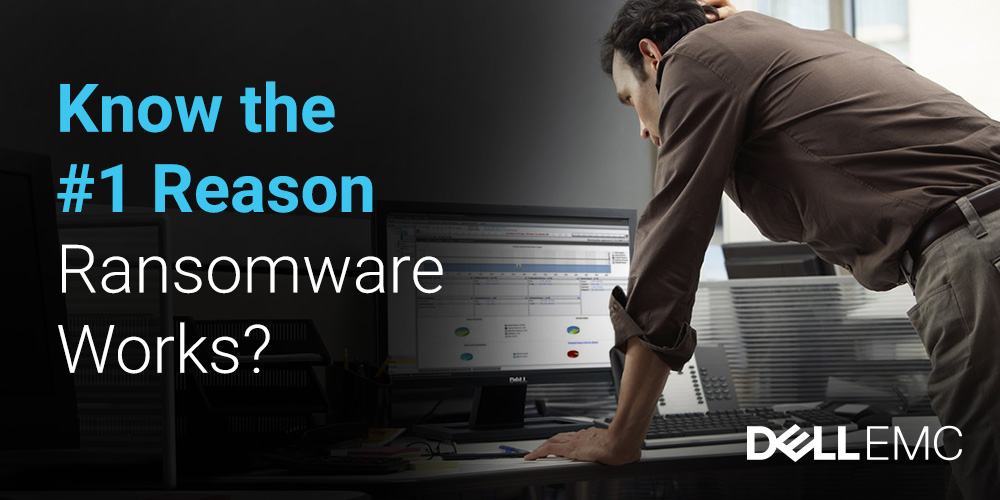
Ransomware can be a nightmare, but it doesn’t have to be.
Last May, some 200,000 PC owners worldwide suffered a costly wake-up call from the aptly named WannaCry cryptoworm that encrypted their data. The attackers demanded $300 in bitcoin payments to unlock the data. Hospitals, universities, automakers and logistics firms were among those reported hit, but the worst affected were small and medium-size businesses.
Why those businesses? Because their data wasn’t sufficiently protected with complete backups like larger enterprises. And that’s the whole reason ransomware works: Victims can’t afford to lose their data, so they pay up, even if payment is no guarantee they’ll get their data back.
With WannaCry, hundreds paid the ransom but got nothing in return. And if Dell’s 2016 Global Data Protection Index is any indication, ransomware can still find lots of targets: 90 percent of the survey’s respondents are behind the curve in the maturity of their data protection strategies.
Dell aims to help them change that with practical, cost-effective and greatly simplified data protection (DP) that works 24×7 across all kinds of data workloads, no matter where they reside — on-premise, in the cloud or some hybrid of the two.
Growing Needs for Comprehensive Data Protection
Organizations of all sizes need DP. While malware and anti-virus safeguards are necessary to safeguard data from threat actors, they are not sufficient to guard against phishing attacks, which are how ransomware and advanced persistent threats can circumvent defense-in-depth strategies. Also, organizations need DP’s backup and recovery capabilities to provide business continuity in the case of system failures or disasters.
So why do the DP strategies and practices of so many organizations fall short? Here are some important reasons:
- Data growth: Keeping up with the growth of both structured and unstructured data from various sources is one of IT’s biggest challenges affecting DP practices.
- Complexity: Managing DP for complex IT environments — especially diverse platforms and applications — can be complicated, often requiring time-consuming management of many legacy point solutions already in place.
- Inconsistency: Inconsistent backup processes can arise from trying to protect applications and data in varied places — from on-premises infrastructures to virtualized environments to private, public and hybrid clouds.
- Cloud migrations: More and more enterprises are migrating workloads to the cloud, but they lack the tools to protect their data residing there, or they mistakenly believe their cloud provider will provide that protection.
- Copy data sprawl: By some estimates, 60 percent of all data storage is a copy of some kind, whether for disaster recovery, development and testing, or application maintenance — just to name a few. And a typical database environment can have 5–12 copies for each production instance.
As a result, IT groups, especially their DP specialists, can have trouble meeting backup windows and SLAs governing goals for recovery point objective (RPO) and recovery time objective (RTO). Regulatory compliance and audits can be issues, too.
Dell Streamlines the Data Protection Process
To simplify and streamline the DP process, Dell has introduced its updated Data Protection Software Enterprise Edition. This set of 11 powerful DP tools covers the entire DP continuum of availability, replication, snapshots, backup and archiving.
For more specific use cases — such as heavily virtualized environments, mission-critical apps and archive-only solutions — specific tool sets are available in four packages: Data Protection Software for Backup; Data Protection Software for VMware; Data Protection Software for Applications; and Data Protection Software for Archive.
Data Protection Software Enterprise Edition can protect everything from user laptops to the largest data centers. It enables long-term retention of data to private, public or hybrid clouds, too. With deduplication rates of up to 99 percent plus a tight integration with Dell Data Domain infrastructure, the Dell Data Protection software can help lower DP’s overall TCO dramatically by reducing:
- Storage capacity requirements for backups by up to 97 percent
- Network traffic by up to 99 percent
- Backup times by 50 percent
What’s more, the Dell Data Protection Software Enterprise Edition delivers a consistent user experience for DP administrators across all its different tools to minimize learning and maximize productivity. At the same time, organizations can gain global data protection and copy oversight without compromising self-service workflows of their lines of business.
Dell Data Domain Solutions Enhance the DP Benefits
Dell also offers a broad portfolio of Data Domain storage infrastructure solutions for enterprises of all sizes. This includes the recently introduced all-in-one Integrated Data Protection Appliance and the software-defined Data Domain Virtual Edition.
The different Data Domain solutions can scale up to 150 PB of logical capacity managed by a single system. They can also achieve backup speeds of up to 68 TB/hour, making it possible to complete more backups in less time and provide faster, more reliable restores.
Check out Gartner’s 2017 Magic Quadrant for Data Center Backup and Recovery Solutions and see Dell’s leading position among all DP offerings. Then get more information on the full line of Dell Data Protection software and Data Domain options, to discover which DP solution can meet your organization’s requirements.